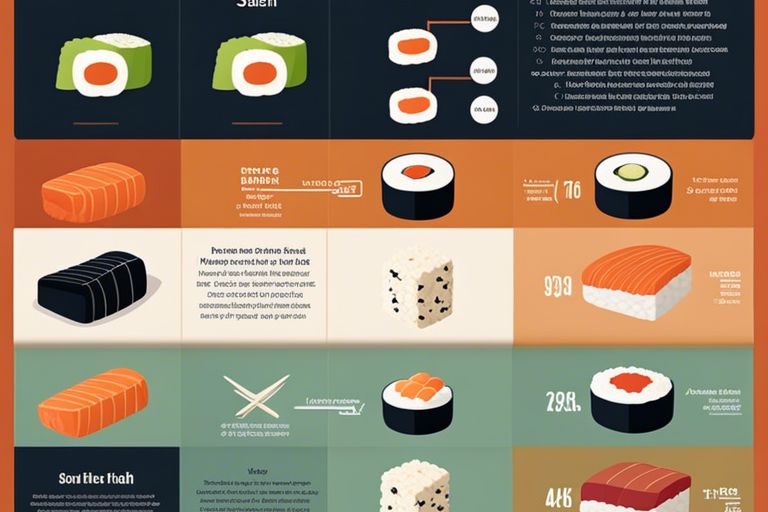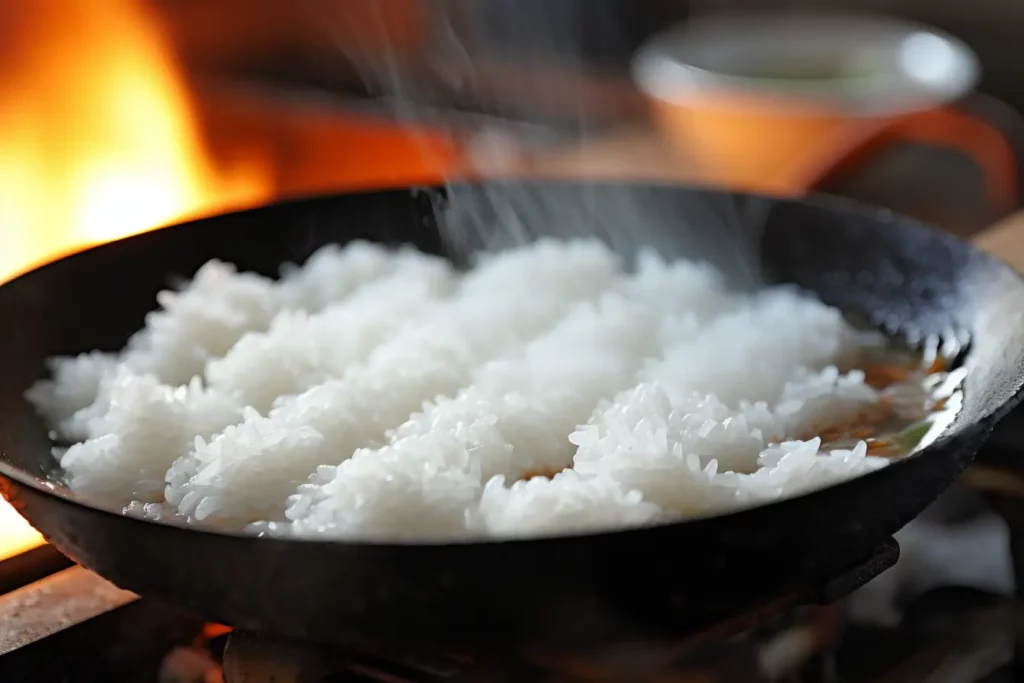Introduction
Welcome to my new blog post about different types of sushi rice and their characteristics. Sushi rice is the most important ingredient for making delicious sushi, and there are many different varieties with different characteristics and flavors. In this post, I will tell you all about the different types of sushi rice so that you can make the best choice for your sushi.
A cross-section of the world of sushi rice
There are countless varieties of sushi rice on the market. Each rice has its own unique characteristics that affect the texture, taste, and consistency of the sushi being prepared. In this section, I will give you an overview of the variety of sushi rice and explain the differences between the different varieties.
Importance of Rice Selection for Perfect Sushi
Choosing the right sushi rice is vital to the quality and taste of your sushi. Each type of rice has its own characteristics and is suitable for different ways of preparing sushi. That’s why it’s important to choose the right strain to get the best possible result.
Some important factors that influence the choice of sushi rice are the grain, glutinous rice content, and the origin of the rice. Depending on whether you want to make nigiri sushi, maki sushi, or chirashi sushi, you will need a rice with certain characteristics to get the perfect result.
Basic Types of Sushi Rice
There are different types of sushi rice, each suitable for different ways of preparing sushi. The basic species include Uruchimai and Shari, each with its own unique characteristics and uses.
Uruchimai – The Classic Sushi Rice
Uruchimai is the classic sushi rice that is characterized by its round and sticky consistency. It adheres well together, making it ideal for making maki sushi and nigiri sushi. Uruchimai is characterized by its high strength and moisture, which gives it its characteristic appearance and taste.
Shari – The basis for Nigiri and Co.
Shari is a special type of sushi rice used to prepare nigiri sushi and other hand-rolled sushi variants. This rice is seasoned with a mixture of rice vinegar, sugar and salt to give it its characteristic flavor. Shari is characterized by its uniform and firm consistency, which allows it to be easily shaped into nigiri sushi.
Shari is particularly popular for making sushi rolls and provides a versatile base for the different flavors and textures that are expressed in the different sushi variants.
Regional specialities and varieties
When it comes to sushi rice, there are different regional varieties, each with its own peculiarities and characteristics. Some of the most popular varieties come from Japan, where rice cultivation has a long tradition. You can find more information about the different types of sushi rice and their properties on Sushi – Everything You Need to Know About Sushi Rice – Kaufland.de.
Koshihikari – Japan’s popular premium rice
Koshihikari is one of the most prized rice varieties in Japan and is also used in the preparation of sushi. The rice is characterized by its excellent stickiness and delicate flavor, which makes it a popular premium rice for sushi preparation.
Sasanishiki – A Sushi Chefs’ Favorite
Sasanishiki is another popular type of rice among sushi lovers and is preferred by many sushi chefs due to its excellent cooking and sticking properties. This rice stands out for its ability to perfectly complement the flavors of sushi ingredients and provide a premium taste experience.
If you value the use of high-quality rice for the preparation of sushi, you should definitely learn about the benefits of sasanishiki.
The texture of sushi rice
Sushi rice is characterized by its special texture, which is indispensable for the preparation of sushi. Different types of sushi rice vary in grain size, stickiness, and flavor profiles, each with different characteristics and impact on the sushi experience.
Grain size and stickiness factor
The grain size and stickiness factor of the sushi rice significantly affect the consistency and texture of the prepared sushi. Larger grains result in a looser texture, while stickier rice varieties produce a more compact and firm consistency. The choice of sushi rice should therefore be made according to the desired end product.
Flavor profiles and their impact on the sushi experience
The flavor profiles of the different types of sushi rice range from mild and neutral to aromatic and slightly sweet. These different flavors affect the overall experience of the sushi, either by providing a subtle backdrop for the fish and other ingredients, or by adding an extra flavor dimension.
Some types of rice can also have a slightly nutty or floral note, which can be perfectly combined with certain sushi variants to create a unique taste experience. Choosing the sushi rice according to the desired flavor profile is therefore crucial for the perfection of the sushi.
How to prepare sushi rice correctly
The preparation of the sushi rice is crucial to the taste and texture of the sushi. There are several steps that need to be followed to get the perfect sushi rice. From how to prepare the rice to how to cook and season it, there are some secrets that we are going to reveal here.
Washing and Soaking – The Preparation
Before cooking the sushi rice, you need to wash it thoroughly to remove excess starch. Rinse the rice in a bowl under cold water until the water runs clear. After that, you should soak the rice for at least 30 minutes so that it gets the right consistency and cooks evenly.
Cooking and Seasoning – The Secrets of the Masters
The secret to a perfectly cooked sushi rice lies in the amount of water, heat, and steam time. A mixture of rice vinegar, sugar and salt is used to season the rice, which gives the rice a sweet and sour taste. These steps are crucial to making an ideal sushi rice that will form the basis of delicious sushi.
The preparation of the sushi rice requires patience and attention, but the result will reward you with a delicious and authentic taste.
Closing remarks
Thank you for reading my blog post about different types of sushi rice and their properties. I hope you’ve found some useful information to help you make delicious sushi at home.
Summary of Sushi Rice Wisdom
In this blog post, we have discussed different types of sushi rice and their respective characteristics. We learned that choosing the right rice has a significant impact on the quality of the sushi. Also, we found out that preparing the rice is an important step in making sushi.
Inspiration for your sushi adventures at home
If you’re in the mood for a sushi adventure at home, try different types of sushi rice and experiment with different ingredients and fillings. With a little creativity, you can create your own unique sushi creations and impress your family and friends.
Try to use local ingredients to add a special touch to your sushi, and don’t forget to consider the presentation to appeal to the eye.
FAQ
Q: What are the different types of sushi rice and what are their characteristics?
A: There are different types of sushi rice, including short- and medium-grain rice. Short-grain rice is sticky and works well in rolls, while medium-grain rice has good texture and flavor and is suitable for nigiri sushi.
Q: What is the difference between sticky rice and regular sushi rice?
A: Sticky rice is extremely sticky and sticks together well, while regular sushi rice is only slightly sticky and provides a better consistency for various sushi dishes.
Q: Is it possible to use basmati rice for sushi?
A: Basmati rice has too strong a fragrance and is not sticky enough to be used for sushi. It is recommended to use specially grown sushi rice.
Q: Can I use brown rice to make sushi?
A: Brown rice has a different texture and consistency than traditional sushi rice, so it’s not good for making sushi.
Q: Does sushi rice need to be washed before cooking?
A: Yes, sushi rice should be thoroughly washed before cooking to remove excess starch and ensure better consistency and flavor.


